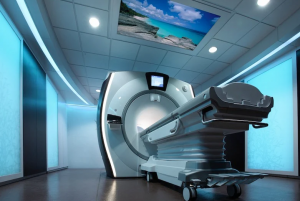During an MRI scan, patients are asked to remove metal objects and to remain as still as possible. This is because movement can blur or distort the images produced by the scanner.
For medical imaging facilities, accreditation is vitally important because it confirms that they meet the highest industry standards. However, the accreditation process can be lengthy and complex.
Ensure Your Facility Meets ACR’s Requirements
If you want your diagnostic imaging center to receive MRI accreditation, you must familiarize yourself with the process’s requirements. The ACR provides several guidelines for the accreditation of imaging facilities, including technical specifications for equipment and quality assurance standards. You also need to have a clear understanding of your facility’s image quality standards and staff qualifications. Lastly, you should be ready to submit clinical and phantom images for review.
Depending on the
MRI accrediting organization, the accreditation process can take anywhere from three to six months. During that time, you will be required to provide a certain number of case studies or phantom scans, pay an accreditation fee, and participate in a site visit. Additionally, you will need to implement a quality-assurance program and put your staff through training on specific procedures.
It’s important to follow all of the instructions provided by your accrediting organization. Doing so will help you ensure that your facility’s MRI equipment, medical personnel, and quality assurance programs meet the organization’s standards. It will also allow you to avoid costly errors and omissions that could delay the accreditation process.
In addition to following all of the accrediting organization’s instructions, you should also adhere to any deadlines that are set. Doing so will prevent your application from expiring, which can lead to lost time and duplicated effort as you restart the process.
Finally, you should make sure that all of your MRI staff members have the necessary licenses and credentials to work in your facility. This will help to ensure that patients are receiving safe and accurate care, which is a top priority for most accrediting organizations.
MRI accreditation is a sign that your orthopedic and diagnostic imaging center meets industry-standard safety standards. This can ease patient concerns about radiation dose and other safety issues. To maximize the benefits of MRI accreditation, you should prepare your facility for the process as early as possible. With the right preparations, your facility will be on its way to earning the ACR’s gold seal of accreditation. This accreditation can provide your practice with an excellent marketing advantage and will help you attract more patients.
Invest in the Right Equipment
Accreditation is a great way to demonstrate that your facility has the equipment needed to provide your patients with quality imaging services. However, achieving accreditation requires more than just having the right equipment. It’s also important to make sure that your staff is qualified and up-to-date on their education and training. Additionally, your facility must be able to meet ACR’s requirements for image quality. The ACR’s MRI accreditation process is designed to ensure that imaging facilities are adhering to the highest industry standards. This process involves a comprehensive evaluation by board-certified physicians and medical physicists who are experts in radiology. Image quality, personnel qualifications, adequacy of MRI equipment, and quality control procedures are just some of the factors that are reviewed.
Achieving MRI accreditation will help to improve the quality of your imaging services, and it will give you an edge over non-accredited competitors. This is because many insurers and referring physicians will only refer to accredited facilities. Additionally, it will make your patients more comfortable knowing that your facility is adhering to the highest industry standards.
Investing in the right MRI equipment will require some upfront capital, so you must consider your financing options. There are a few different ways to finance an MRI system, including vendor financing, third-party financing, and bank financing. Whichever option you choose, it’s important to shop around and get quotes from multiple vendors before making any final decisions.
Once you’ve secured financing, the next step is to select an MRI system that will meet your facility’s needs. It’s important to consider the number of patients that you expect to serve and your specific imaging needs. For example, you may need a system with a high field strength or a large imaging volume.
Once you’ve selected the right MRI system for your facility, it’s time to start the accreditation process. Depending on your accrediting organization, the process may take up to three years. During this time, your facility will have to submit case studies and phantom scans, pay an accreditation fee, and undergo a site visit. In addition, you’ll need to implement a quality assurance program and participate in annual testing.
Make Sure Your Staff Has the Right Qualifications
When it comes to medical imaging, the American College of Radiology (ACR) is the gold standard. Its MRI accreditation process is thorough and helps ensure that your imaging center adheres to the highest standards in the industry. This includes personnel qualifications, equipment adequacy, and quality control procedures. Achieving and maintaining ACR accreditation can help your practice secure a competitive advantage in the market, as insurers will recognize that your facility meets its guidelines.
During an unannounced visit, ACR staff will carefully examine your facility’s images and review procedures to ensure compliance with the organization’s strict quality-control standards. They will also look at the equipment itself to ensure that it functions properly and can deliver the desired results. In addition, they will review your facility’s policies and training program. While the exact documentation that you need to submit varies by the accrediting body, most will require detailed information on your staff’s qualifications, adequacy of equipment, and quality assurance programs.
As you prepare to pursue MRI accreditation, be sure to make note of your accrediting organization’s deadlines. Adhering to these deadlines will help you avoid delays and potentially costly errors. For example, if your team does not submit images by the required date, you will need to resubmit them to remain compliant.
When interviewing MRI technologists, be sure to ask candidates about their experience with accrediting organizations. This can help you gauge the candidate’s ability to meet deadlines and work under pressure. You should also ask about their past experiences with MRI equipment malfunctions. Describe how the candidate responded to these incidents to gauge their level of professionalism and problem-solving skills.
In addition to hiring qualified MRI technologists, your practice should also invest in a comprehensive MRI accreditation toolkit. This will allow your team to easily gather and store the documentation that you need for unannounced visits from ACR representatives. This will help you avoid costly errors and ensure that your facility is prepared to meet ACR’s strict quality-control requirements. Additionally, a toolkit can assist your team in preparing for unannounced site visits from other accrediting organizations.
Ensure Your Facility’s Images Meet ACR’s Requirements
As a healthcare provider, you’re responsible for providing your patients with the highest-quality medical imaging services possible. This is why pursuing ACR accreditation for your MRI facility is so important. ACR accreditation not only ensures that your patients receive high-quality care, but it also demonstrates to healthcare providers and payers that you’re committed to excellence. This can improve your reimbursement opportunities and strengthen your position when negotiating reimbursement rates.
The ACR accreditation process involves evaluating many aspects of your MRI imaging practices, including image quality, personnel qualifications, and the adequacy of your equipment. In addition to submitting clinical images and case studies, you must also perform comprehensive phantom testing for each of your MRI scanners. These tests involve imaging a set of standardized phantoms on each of your MRI machines and submitting the resulting images for evaluation. These phantom images are evaluated for signal-to-noise ratio, spatial resolution, and other performance parameters to determine whether your equipment is up to par.
Once your MRI phantom images are ready to be evaluated, you’ll need to upload them to your ACR accreditation website. Make sure you follow the submission instructions carefully to avoid any mix-ups. It’s a good idea to create a filing system for all of the documentation required during the accreditation process so that it’s easy to find when you need it.
Aside from ensuring that your MRI equipment meets ACR requirements, it’s also essential to establish a rigorous quality control program for your MRI imaging services. This means establishing and following routine testing schedules to measure the performance of your MRI scanners, performing regular maintenance, and maintaining records regarding equipment malfunctions and failures.
In addition to these measures, it’s important to maintain a thorough record-retention and retrieval process for your patients’ data. This can help you meet ACR’s requirements for patient access and privacy, and it may also help protect your facility from claims of malpractice.
While preparing for ACR accreditation can be a complex and time-consuming process, it’s one of the best things that you can do to protect your patients and your reputation. Fortunately, with the help of a team of experienced radiologists and medical physicists, it’s possible to achieve and maintain ACR accreditation in your MRI facility.






